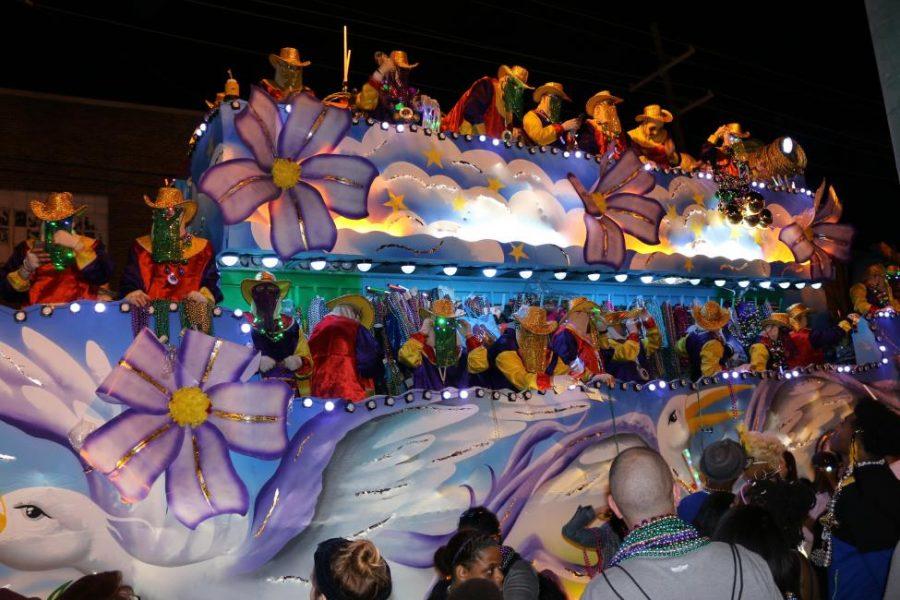The greatest free show on Earth
Laissez les bon temps roulez! Or, as it’s said in New Orleans, “Let the good times roll!” Notoriously known for their seafood, lively music, vibrant architecture, and friendly people, New Orleans is a city rich in history. One historical aspect of the city is Mardi Gras, an annual festival filled with lots of beads, decorated masks, extravagant parades, and lively parties, which came to North America from France.
Mardi Gras, which in French translates to “Fat Tuesday,” originated in the medieval ages when Jean Baptiste Le Moyne Sieur de Bienville, a French-Canadian explorer and founder of New Orleans, arrived just south of the city. The very first Mardi Gras was celebrated near modern-day New Orleans on March 3, 1699.
In the early 1800’s, the public celebration of Mardi Gras consisted mainly of maskers on foot, in carriages, and on horseback. In 1837, a costumed group of revelers walked in the first documented “parade” and in 1857, six New Orleanians formed an organization that established several Mardi Gras traditions by forming a secret Carnival society, choosing a mythological namesake, presenting a themed parade with floats and costumed maskers, and staging a ball.
These traditions are still carried on in New Orleans, with parades featuring extravagant floats and elaborate costumes. Krewe riders toss “throws” to the crowds. The most common throws are colorful beads and doubloons, which are aluminum, dollar-sized coins usually impressed with a krewe logo.
Though Mardi Gras is a New Orleans tradition, it is celebrated in different ways all over the country. Here at Mercy, the French Honor Society (FHS) participates in the festivities.
“FHS takes a restaurant trip to celebrate Mardi Gras, but a lot of our celebrating is in our French classes,” said FHS member senior Kate O’Sullivan. “Freshman and sophomore year, we decorated masks for a day in class. Junior year, we decorated coconuts like the groups do down in New Orleans for the parades. Something we do every year that I really like is getting King Cake, which is kind of like a cinnamon bread.”
Every year, FHS recognizes and appreciates French and New Orleanian culture in interactive and exciting ways.
“My favorite part of the celebration is the restaurant trip,” said O’Sullivan. “We take the bus after school and go to a French restaurant, and all the girls really look forward to it. Madame always picks a great place [to eat] and the food is amazing, so it’s hard not to have a good time with everyone.”

